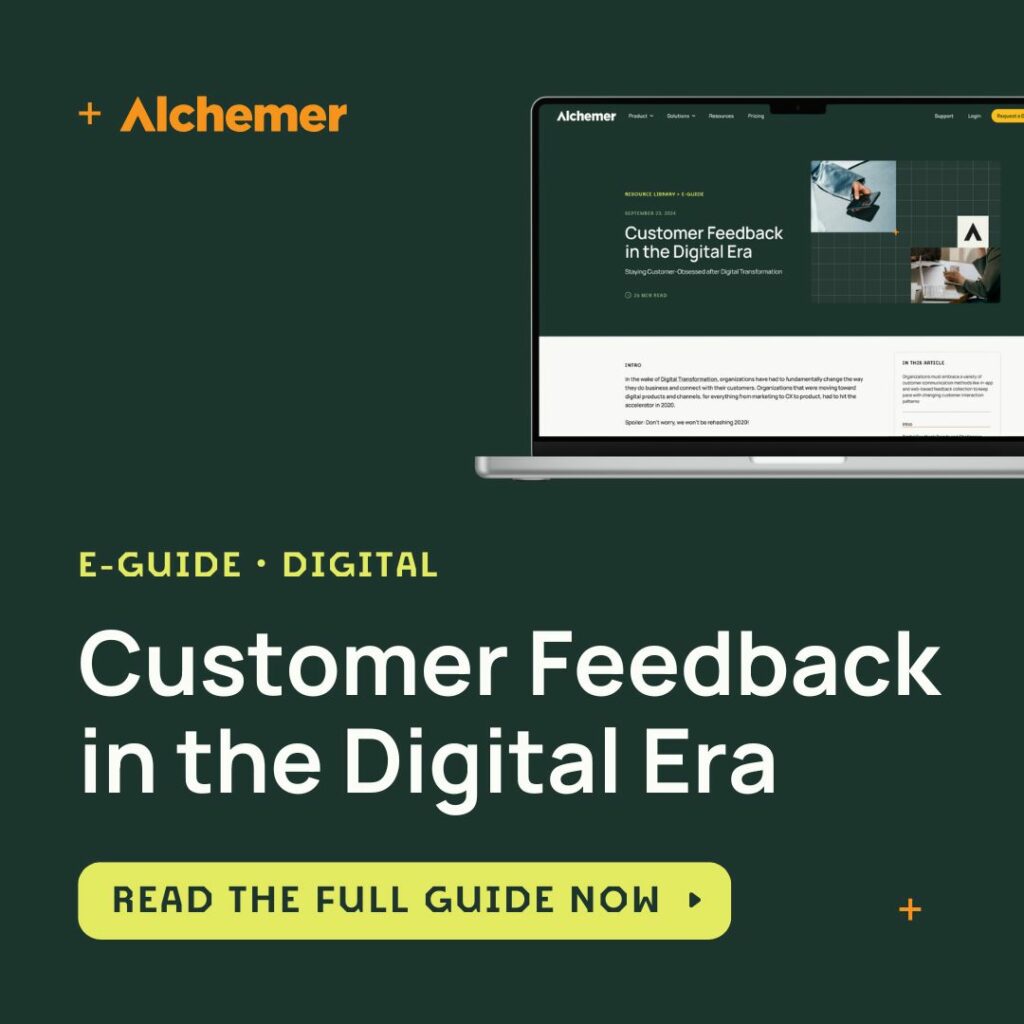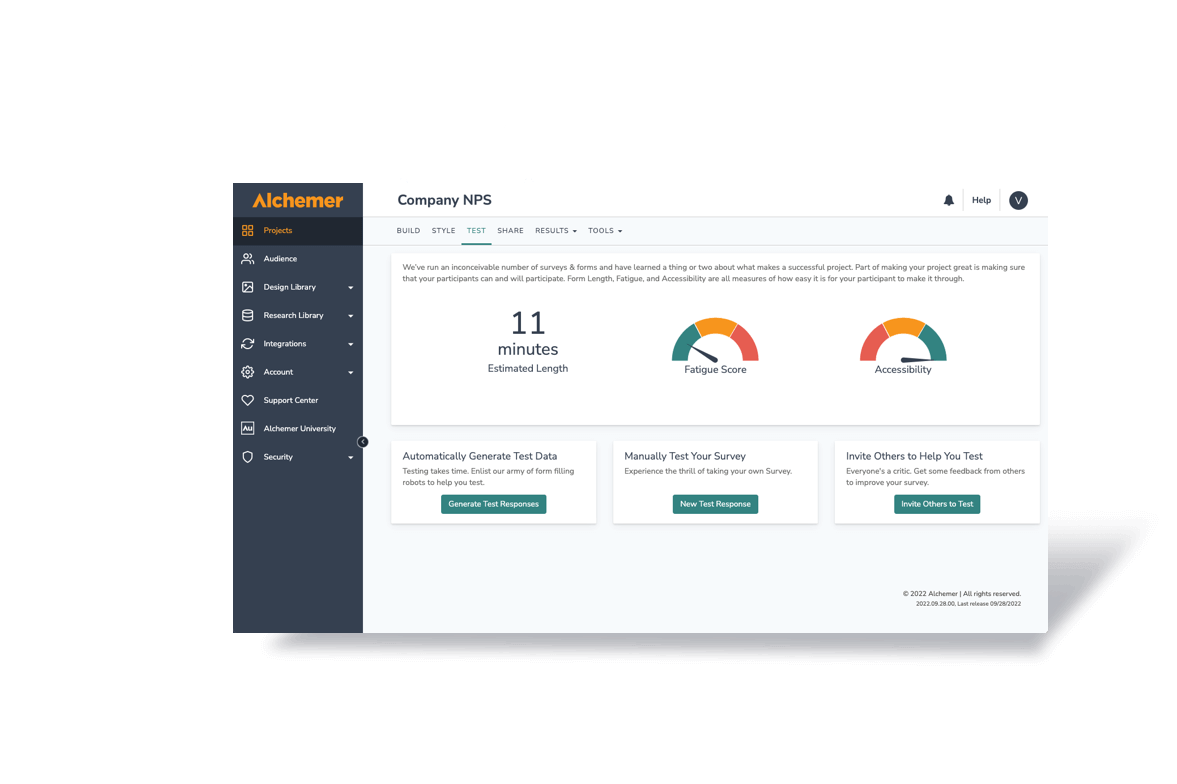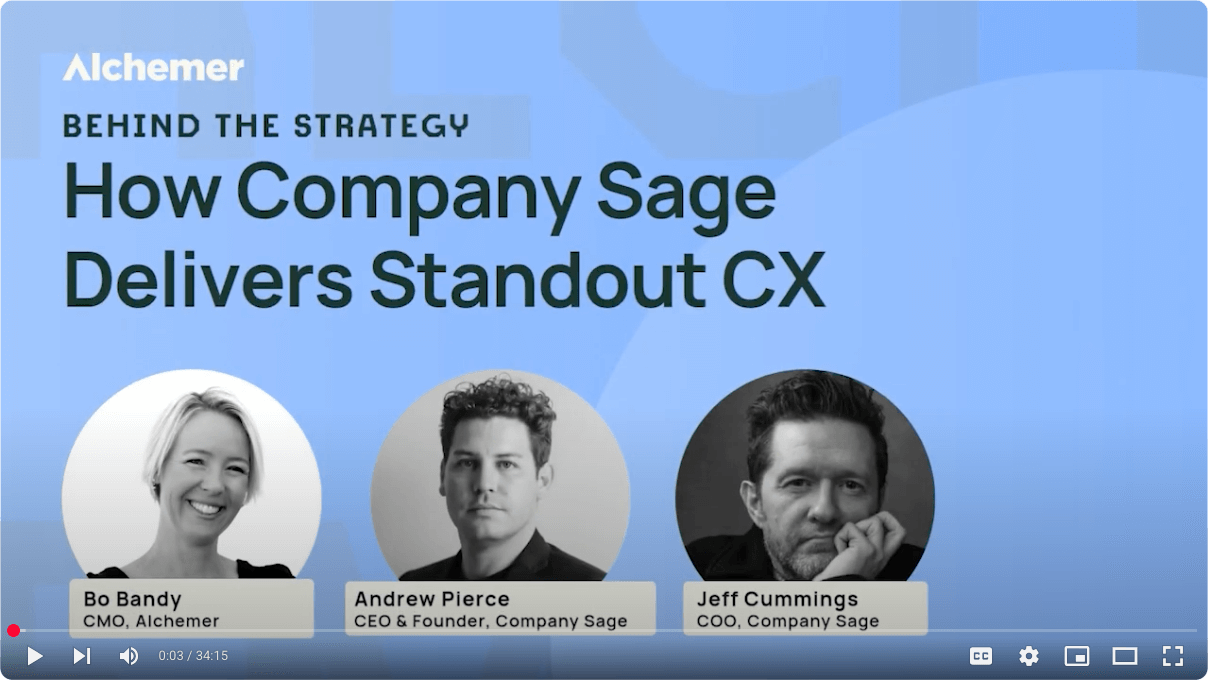The following content is from our new e-guide, Customer Feedback in the Digital Era. To access the full guide, click this link!
Digital Transformation is not a new topic or concept. Organizations of all types, from Fortune 500 brands to government agencies and school districts have all been going through Digital Transformation for decades. However, as we all know, gradual transformation processes were greatly accelerated during the COVID-19 pandemic. In fact, 97% of companies say the COVID-19 pandemic sped up all of their digital transformation initiatives.
With such rapid changes, now is the time to assess the impact of these transformations on customer experience and consider how to maintain a customer-obsessed approach in a digital-first business landscape.
Let’s get started!
In a digital-first landscape how do different teams stay customer-obsessed?
As organizations embrace Digital Transformation, it’s essential for every team to remain focused on the customer. Each department plays a crucial role in fostering a culture of customer obsession, ensuring that customers are heard, and that customer needs and preferences are at the forefront of their initiatives.
Here’s how different teams can stay customer-obsessed in a new digital-first customer landscape:
CX Teams
Use Digital Feedback Channels to Monitor Sentiment: Keeping a close eye on customer sentiment is vital for understanding your current user experience. Sentiment data offers valuable insights into how customers perceive your brand, app, or website.
New digital feedback collection tools and advancements in AI have made it easier than ever to monitor customer sentiment. Quick in-app micro-surveys with simple questions like:
- Do you love our app?
- Do you love our website?
- Is your experience with our app meeting your expectations?
- Did you encounter any issues today?
- What feature do you find most useful?
With your finger on the pulse of customer sentiment, you can ensure that you’re addressing concerns and enhancing the overall experience. This real-time feedback allows you to make informed adjustments, ensuring that your digital offerings remain aligned with customer expectations.
Personalize a Customer’s Digital Experience: Customers now expect tailored digital experiences, and mobile is arguably the most personal channel available. We’re used to interacting with our devices in a conversational and customized manner, and brand interactions should reflect this expectation.
Personalizing digital experiences means delivering the right message to the right person, in the right place, at the right time. Let’s break that down:
- Right Message: Is your message relevant and useful?
- Right Person: Are the right customer’s receiving the message?
- Right Place: Are you engaging customers where they are?
- Right Time: Are you communicating at a moment that fits into their journey?
Not only do personalized engagements exemplify a brand’s customer obsession, but they also enhance the time customers spend on your app or website.
Embracing customer obsession in this way can set your brand apart in a crowded marketplace. More engagement leads to greater revenue opportunities and increases the chances of retaining customers.
Product Teams
Use Customer Feedback to Drive Your Product Roadmap: Customer experience (CX) teams aren’t the only ones feeling the pressure to do more with less; product teams also face the challenge of delivering high-quality products and experiences with limited development resources.
Guessing what customers want is not true customer obsession. It’s essential to let the Voice of the Customer (VoC) guide your product roadmap. This approach not only maximizes your resources but also fosters a customer-centric organization.
You can gather VoC feedback through traditional surveys, in-app prompts, or website forms. It’s crucial to centralize all this feedback in one accessible location, regardless of the channel it originated from.
Close the Loop with Customers After Delivering on Feature Requests: For product teams, implementing a personalized yet scalable approach to closing the feedback loop is vital. By actively communicating with customers about how their feedback has influenced product improvements, you can strengthen their sense of ownership and loyalty towards your brand.
In-app prompts are an excellent way to close the loop, allowing you to target the specific customers who made feature requests in previous feedback surveys. This targeted communication reinforces the value of their input and demonstrates your commitment to enhancing their experience.
Continue Reading
Want to continue reading? Access the full guide for answers to the following questions:
- What are some emerging digital feedback trends? What are some challenges?
- What are some examples of brands demonstrating a commitment to customer obsession?
- How do teams prove the value of customer-obsession?





